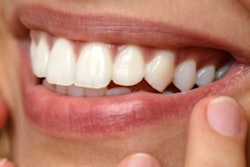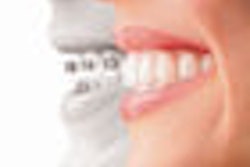
What do the most influential people in the world have in common? After comparing images of smiling faces selected from Time magazine's annual list of the 100 most influential people from 2006-2010, Spanish researchers have found consistencies in their facial features, according to a study to be published in the Journal of Oral Rehabilitation (March 2013, Vol. 40:3, pp. 159-170).
"The smiles of the world's most influential people revealed common standards, regardless of occupation or gender," wrote the study authors, from the University of Seville School of Dentistry. Those commonalities "may play a decisive role in the expressions of influential faces."
In addition to their own work, the researchers examined previous studies that sought to quantify which aspects of a smile result in the greatest amount of appeal. Their findings led to a broad recommendation for practitioners helping patients to achieve their own ideal smile.
"The most important aesthetic objective should be to achieve a balanced smile," they wrote, "bearing in mind not just the patient's dental aesthetics, such as tooth form, position, or color, but also the soft tissues and the overall harmony of the face."
Previous research has shown that smiles even have a physiological influence on the perception of other people, the researchers noted.
36 variables
For this study, they searched the Internet for images of the 500 individuals included in Time's list during a five-year period. The images had to be large, with a frontal view photo of the subject's face with his or her head held upright. The researchers found 168 photos of sufficient detail to measure facial features.
Posed photos were selected in order to find a smile that is most representative of the subjects, one that is "a social form of the smile ... easily repeated and which tends therefore to be used by most famous figures at public events," they explained.
The features were examined with a set of variables gathered during a search of scientific literature published in PubMed, Cochrane, and Scopus. A total of 6,048 variables -- 36 variables for each of the 168 subjects -- were traced and measured by photogrammetric analysis "to obtain proportional measurements of a qualitative and quantitative nature," the researchers explained.
The 36 variables were taken from 27 points and 20 linear measurements identified by the researchers during the course of their literature search. From there, they were broken down into five sections:
- Smile-to-face proportions (quantitative variables)
- Smile proportions (quantitative and qualitative variables)
- Dental proportions (quantitative variables)
- Symmetries (qualitative variables)
- Other qualities relating to the smile (qualitative variables)
After settling on the photos and variables, two dentists examined the photos and classified them according to gender, year they were listed, and occupation.
Differences between men and women
A few statistically significant differences between the facial proportions relative to the smile of influential men and women arose: nose width (p = 0.001), lower smile index (p < 0.001), and vertical lower lip proportion were higher in the smiles of men compared with women.
Smile height index was the only quantitative parameter that was greater in women than men (p = 0.045). The remaining variables in this section were similar (p > 0.05) in influential people of both sexes.
Of 19 smile proportion parameters, three were significantly different between sexes. Smile index, total buccal corridor percentage, and vertical lip proportion in the smile were higher in men. The researchers acknowledged that buccal corridors were deemed a key smile feature in other literature, but this was not confirmed by their own study. Yet, there was evidence in it that buccal corridors were wider in men than in the women included in the study. However, women had significantly greater gingival display and higher smiles (p < 0.05) than men.
The lateral step also is considered to be a definitive feature of an attractive smile in literature cited by the researchers, and it was a common variable in this study for both sexes.
In another aspect of the study, the researchers considered occupation. This yielded an assertion that "there are no significant differences in quantitative smile variables among the most influential people according to occupation," because "none of the quantitative variables showed statistically significant values when crossed with the occupation of the person concerned."
So there are, in fact, quantifiable similarities in influential people based on occupation. A correlation between influential peoples' occupation arose in one set of qualitative variables.
"We found that smiles with interincisal gaps varies by profession (with businessmen seen as having most interincisal gaps) as did occlusal cant (with musicians and writers having the least deviation in occlusal cant)," the researchers wrote.
Understanding smile attractiveness is important, they concluded, "because this is what most ordinary people use as a criterion for judging whether treatment has been successful or not."



















